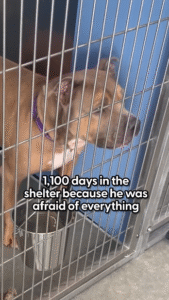
Three Years of Trembling: A Shelter Dog’s Life Shaped by Fear
The fluorescent lights of the shelter hummed overhead as Ralphie pressed himself into the farthest corner of his kennel, his body trembling like a leaf in the wind. For over three agonizing years—1,100 days to be exact—this had been his reality. While other dogs wagged their tails at passing visitors or jumped excitedly at the sight of a leash, Ralphie remained frozen in fear, his soulful brown eyes wide with perpetual anxiety. The world outside his concrete-and-barrier enclosure seemed impossibly loud, bright, and terrifying. Volunteers spoke in hushed tones about him—”such a sweet boy, but so scared of his own shadow.” They’d try coaxing him with treats, but even the crinkle of the treat bag made him flinch. The shelter staff loved him deeply, but their hearts broke a little more each time another adoption event passed without anyone seeing past his trembling exterior to the gentle spirit hiding beneath. Ralphie’s days blurred together in a monotonous cycle of fear—startling at slamming doors, shrinking from raised hands, and curling into himself when strangers approached. He watched as kennel mates came and went, their tails wagging as they embarked on new adventures while he remained, paralyzed by the unknown. The shelter became both his prison and his sanctuary; the only place where, despite the noise and chaos, he knew what to expect. Yet in quiet moments, when the shelter grew still, a flicker of curiosity would sometimes shine through—a tentative sniff toward a new volunteer, a fleeting moment of eye contact that hinted at the dog he could become if only someone had the patience to help him unravel his fears, one thread at a time.
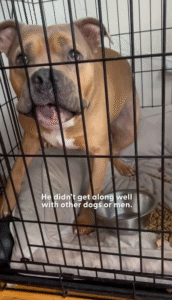
Isolation’s Heavy Toll: When Every Connection Felt Threatening
The cacophony of barking dogs sent Ralphie scrambling into his bed, his entire body tense as a coiled spring. Socialization attempts were a special kind of torture—the other dogs were too loud, too energetic, too everything. Their playful bows and wagging tails might as well have been threats in Ralphie’s anxious mind. He’d flatten himself to the ground, ears pinned back, tail tucked so tightly it disappeared beneath his belly. The shelter staff tried everything: slow introductions with calm dogs, positive reinforcement with treats, even one-on-one play sessions with their most experienced volunteers. But Ralphie wanted no part of it. His fear wasn’t selective; it was a blanket that smothered every potential connection. Men were particularly terrifying. Their deeper voices, larger frames, and often-unpredictable movements sent Ralphie into a panic. Even the gentlest male volunteer couldn’t approach without Ralphie retreating, his body language screaming “please don’t hurt me.” The women at the shelter had slightly better luck—he might tolerate their presence if they moved slowly and didn’t make direct eye contact—but even then, any sudden gesture would send him fleeing to his safe corner. The shelter behaviorist theorized that Ralphie might have had traumatic experiences before coming to the shelter, but without knowing his history, they could only guess at the roots of his all-consuming fear. What they did know was that this sweet, sensitive soul was slowly wasting away in his self-imposed isolation, and if something didn’t change soon, he might spend his entire life trapped in the prison of his own anxiety.

A World of Perceived Dangers: Navigating New Experiences
The car ride to his foster home should have been exciting—the first step toward a new life—but for Ralphie, it was sheer terror. His foster mom had prepared carefully, lining the backseat with familiar blankets from the shelter and keeping the radio off, but nothing could ease Ralphie’s panic. His breath came in frantic gasps, eyes blown wide with terror, every muscle trembling as the landscape blurred past in a dizzying, incomprehensible rush beyond the glass. When they arrived home, he refused to exit the car for twenty minutes, frozen in fear of the unfamiliar surroundings. His foster mom sat patiently on the driveway, tossing treats his way until he finally mustered the courage to take one wobbling step forward. Inside the house, every ordinary household object became a potential threat. The refrigerator’s hum made him jump. The television’s flickering images caused him to retreat behind the couch. Even his water bowl, placed in a different spot than at the shelter, required careful investigation before he’d approach. They celebrated microscopic victories: the first time he took a treat from their hand without flinching, the moment he voluntarily approached to sniff a shoe, the evening he tentatively rested his chin on the couch (before immediately pulling back, as if shocked by his own boldness). Progress wasn’t linear—some days were two steps forward, three steps back—but gradually, the world began seeming slightly less terrifying through Ralphie’s eyes.
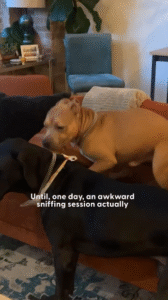
The Turning Point: An Unexpected Canine Connection
The neighbor’s dog, a calm senior Labrador named Gus, had been carefully introduced through the safety of a fence for weeks. Ralphie would approach cautiously, sniff tentatively, then retreat—his standard pattern. But on this unremarkable Tuesday afternoon, something shifted. Maybe it was the particularly delicious treat Ralphie had just eaten. Maybe it was the way Gus deliberately avoided direct eye contact. Or maybe, just maybe, Ralphie’s curiosity finally outweighed his fear. As the humans watched with bated breath, Ralphie initiated contact for the first time in his life. His approach was painfully awkward—nose extended comically far forward, body angled for a quick escape—but when Gus didn’t react aggressively, something miraculous happened. Ralphie’s stiff tail gave the tiniest wag. Then another. Then, in a movement so sudden it startled even himself, Ralphie dropped into a play bow—front legs extended, rear end in the air, his entire body vibrating with nervous energy. The humans froze, afraid to breathe lest they break the spell. And then—impossibly, wonderfully—the two dogs were playing. Not the wild, carefree play of confident dogs, but a delicate dance of tentative jumps and careful retreats.
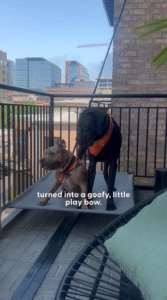
Awkward Beginnings: The First Clumsy Steps Toward Playfulness
That first play bow became Ralphie’s breakthrough moment, the crack in the dam that finally allowed his true personality to come flooding through. In the weeks that followed, his foster family witnessed a miraculous transformation. The dog who once cowered from his own shadow began exhibiting behaviors no one thought possible: He discovered the joy of zoomies, racing around the backyard in wild, looping patterns, his ears flapping comically as he skidded to stops. Toys—once objects of suspicion—became treasured possessions, though he still approached new ones with exaggerated caution, poking them with one paw before committing to play. His signature move became what his foster family called “the sneak attack”—creeping up on a toy with exaggerated stealth before pouncing with all the grace of a newborn giraffe. Most endearing were his increasingly frequent play bows, which remained hilariously awkward. Unlike confident dogs who executed the move with fluid grace, Ralphie’s version involved an over-exaggerated lowering of his front half while his back legs remained stiff, often resulting in him toppling sideways. These imperfect attempts at play became a daily reminder of how far he’d come—each clumsy bow a victory over his former fears.

Discovering Joy: When Curiosity Finally Overcame Caution
With his newfound confidence, Ralphie began approaching life with cautious curiosity rather than outright terror. His foster family carefully exposed him to new experiences, always letting him set the pace: Beach trips, once unimaginable, became a favorite adventure—once he overcame his initial fear of the waves’ sound. His method was painfully slow: first observing from the parking lot, then venturing to the dry sand, and finally, after several visits, daring to let the foamy water touch his paws. When he finally allowed a wave to chase him, the resulting gallop along the shoreline—his tongue lolling, his tail high—was pure joy captured in motion. Meeting new people remained challenging, but he developed a system: circle the person at a safe distance, accept treats tossed on the ground (never from the hand), and only after multiple visits might he allow a gentle pet. Children still made him nervous with their quick movements, but he discovered that toddlers seated on the ground were less threatening, and he’d sometimes approach to sniff a chubby, outstretched hand. Other dogs were no longer automatic threats. While he’d never be the life of the dog park, he formed careful friendships with calm, respectful canines. His play style remained unique—a series of approach-and-retreat maneuvers punctuated by his signature awkward bows—but it was undeniably play, something the old Ralphie would never have dreamed possible.
Unleashing Personality: The Comedian No One Saw Coming
The Ralphie who emerged from his shell was a dog of endless quirks and comedic timing. His foster family often said he should have his own sitcom, so entertaining were his daily antics: There was his “concerned face”—head tilted, eyebrows furrowed—which he deployed whenever humans ate food without sharing. His dramatic sighs when asked to move from a comfortable spot could rival a Shakespearean actor. He developed a habit of “sneakily” stealing blankets by making intense eye contact while slowly inching his paw toward the coveted fabric, as if direct visual connection made the theft invisible. His playfulness took on a distinctly Ralphie-esque flair. He invented a game called “chase the leaf but only if it moves exactly right,” where he’d stalk fallen leaves, pouncing only when they fluttered in a particular pattern. His zoomies featured a unique hopping gait when particularly excited, all four legs leaving the ground simultaneously like a bounding rabbit. But perhaps most endearing was his growing capacity for affection. The dog who once shrank from touch began seeking out cuddles—on his terms, of course. He’d sidle up next to his favorite humans and ever-so-slowly lean his weight against them, as if testing whether the contact was safe. Once approved, he’d melt into a puddle of dog, his contented sighs signaling he’d found his happy place.
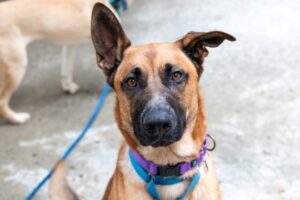
Ready for Love: A Once-Fearful Soul Now Prepared to Bond
After 1,100 days in the shelter and months in foster care, Ralphie stands at the threshold of his new life—a goofy, loving companion just waiting for the right family to appreciate his hard-won progress. He’s come astonishingly far from the trembling dog who feared his own shadow, but he’ll always be a sensitive soul who needs: Understanding on the occasional bad day when old fears resurface Patience as he continues to build confidence in new situations A sense of humor to appreciate his unique quirks In return, he offers: Unconditional love from a dog who knows second chances are precious Endless entertainment with his one-of-a-kind personality The most rewarding transformation story any adopter could hope to be part of Ralphie’s journey proves that with time, patience, and love, even the most fearful shelter dog can blossom into a wonderful companion. Now happily settled in Chicago, this special boy is ready to write the next chapter of his life—one awkward play bow at a time.


